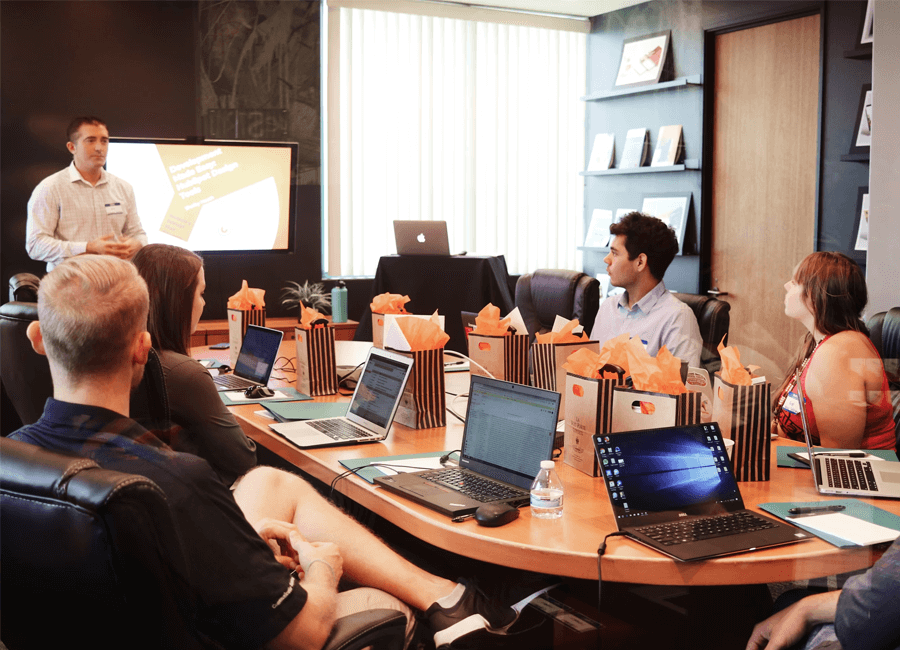There are many skills that are beneficial to research teams, from communication skills all the way through to agility and adaptability. But creativity has been a long overlooked skill in the market research industry. Insight teams are currently being encouraged to be creative in ways that help them conduct better research at a faster pace, but this doesn’t actually leave a lot of room for proper creativity to prosper and influence the market research experience at a fundamental level for the better.
There are three key creative skills that are often overlooked and are integral to the creation and conduction of dynamic market research:
Lateral Thinking
In order for information to be absorbed, people relate it to their own life and experiences. This can be done through techniques such as analogies and metaphors. By using these you can bring to life information and give greater context so that the audience has a deeper understanding of the insights.
Another great way to provide real life context to research and immersive experiences is to have interactive reporting platforms and mediums such as infographics and videos. These mediums engage the audience and brings data to life through visuals and games.
| Tweet This | |
| Creativity is a great skill for insight experts. It helps design greater research experiences, and better engages stakeholders and participants. |
Interactivity and relatability also have the power to help insights click in the mind of stakeholders, as it encourages them to draw comparisons between the unknown and something familiar with each interaction. This makes new information less daunting and more approachable – and therefore, more actionable.
One example of how you could present insights to spur a relatable connection would be to create a concise, interactive infographic of research points using related imagery that's universally recognised. Laying out the insights in a creative, but easy to follow manner such as this will help expand understanding to the most people possible and also cross educational, cultural and even language boundaries, thus, giving you greater reach and understanding across the entire stakeholder organisation.
Artistic Creativity
It can be difficult to move away from the more traditional styles of reporting data, such as the well-used PowerPoint and written report, but with just a little creativity and thinking outside the box, you can give complex information a life.
If you are looking for a more compelling way to communicate data than immersive infographics, using relevant visuals such as images, gifs, videos, and illustrations alongside your information will allow users to understand data on a deeper level. The more engaging you can make your information, the more likely it is to be engaged with and absorbed by your audience.
At FlexMR, we’ve already had a bit of experience in arts-based research reporting methods. In 2019, our marketing team implemented our Consumer Postcard Project with great success. With each brand that volunteered, we conducted key qualitative research and translated the resulting insights into a unique work of art; for the report itself, we provided that art piece on one side of a postcard and created a summary blurb outlining key points on the other side to support the art piece. This project was a huge success, with feedback from brands most commonly saying that they learnt something new and thoroughly enjoyed consuming the new medium of insight report.
This proved that insight professionals could in fact translate key insights into highly-provocative thematic artworks, and that stakeholders could interpret the right insights from a more creative medium that would still have the same effect as traditional written reports.
But 2D artworks aren’t the only technique to pursue; images in general are brilliant additions into the more traditional written reports. Unexpected and shocking images are useful for breaking up the white space and blocks of text, and can be used to represent or further emphasise insights in a different and intriguing way. You could also add specifically curated illustrations that fit the theme of the data and bring more understanding to your audience.
Art-based research methods can also include real people. By using podcasts or video insight professionals can personalise the data they want to get across and communicate it in a more personal manner, which should encourage the stakeholders on the receiving end to be more open to receiving the information.
If you would like to find out about ways you can present information through creative visuals, you can check out our animated insights video that explores more about visual insight communication. Using these creative skills to help you to think outside the box in more contexts can lead you down fun, less traditional routes and change the way you deliver information to be more engaging and promote your storytelling abilities.
Storytelling
This leads us on to our third creative research skill that every research team needs. One way that ideas are conveyed most effectively is through storytelling. Peg Neuhauser found that “learning which stems from a well-told story is remembered more accurately, and for far longer, than learning derived from facts and figures.” And it is true, most people will remember an interesting story more accurately than a list of pure data.
| Tweet This | |
| Storytelling, building immersive and interactive experiences, and art are all great creative skills that all research teams need to create better research experiences. |
Traditional storytelling can be integrated into research reports to make them more captivating and persuasive, which are two very important aspects you need to strike with if you want to fully engage your audience.
Some of the skills that matter most for storytelling are: understanding your audience (who’s in the room, what’s the business context), stringing together a narrative (the situation, challenge or problem, and recommended solution), and building on that narrative with authentic examples and anecdotes.
Starting a report or even a simple conversation with only data or technical statistics can alienate your audience if they don’t understand or can’t interpret on their own what that data means. And though this type of data is relevant and valuable to the audience and adds credibility, relying too heavily on numbers can quickly bore your listeners, encouraging them to disengage with the rest of the report.
When creating a story for your data, you want to position the problems in the foreground and then show how they could overcome them through the direction of insights. You want a story to have progression and a dynamic nature so that the audience sees it as more exciting.
Storytelling is a valuable skill because it creates the time and space to highlight important contexts, such as what the conflict is, who is involved, and when and where it occurs. Whilst providing context through storytelling engages your audience – it can also give you a roadmap to solutions the stakeholders hadn’t even thought of yet.


















